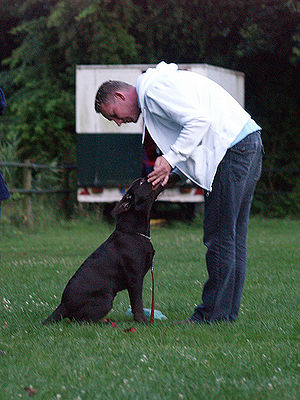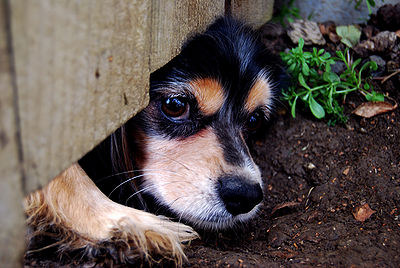
We talk a lot about positive training for dogs (cats and other animals, too) but what exactly does it mean.
Who doesn’t enjoy being praised for a job well done. Our pets thrive on praise and of course, food too. Positive reinforcement is offering praise and/or treats for your pet’s positive behavior. That’s what positive training is about. We’ll talk mainly about dogs, but cats, horses, all animals benefit from positive training.
When your dog performs correctly, immediately praise and offer a treat. Your timed response is very important and should be immediate or your dog might not understand why he’s being praised. Keep treats within easy reach so you’re always prepared.
When training your dog, use simple one word commands like sit, down, stay, etc.. If you give commands in long sentences, you’ll probably get a quizzical stare from your dog.
Positive reinforcement is used to teach behavior. If your pet does something you want him to continue to do, praise and/or treat every time he repeats the behavior.
You can encourage certain behaviors in stages. If your dog acts out part of a behavior, you can praise and continue further training.
It’s very important for you to be consistent. And family and friends need to understand the importance of being consistent as well and using positive methods. Reward only the desired behavior.
When training with treats, make them tiny – you don’t want your dog to put on the pounds. Once your dog has learned a behavior, you can gradually replace the treats with pats, praise, a favorite toy.
Choke chains, prong collars, jerking the leash, yelling are not methods you should use to control your dog. The only behaviors forceful handling teaches a pet are aggression, fear, insecurity and timidity.
If you decide to use a trainer, interview him, ask for credentials, sit in on training sessions. Make sure your trainer uses positive methods.
Positive training results in a pet with little or no behavior problems. And that makes you and your pet happier.
A Note about Positive Training: There are instances where you may have to be a little more forceful when training a dog. Examples: when a dog is about to run into danger such as traffic, when the dog doesn’t respond and continues unwanted behavior. If you have a problem, the best way to solve it is to call on a professional who trains generally using positive methods but knows how to fix unwanted behaviors without damage to the relationship you have with your pet.
Video


